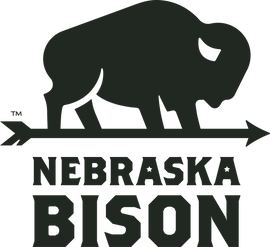Bison Whole Tenderloin (3.5 lb.)
5Bison Whole Tenderloin (3.5 lb.) Overview
Description
The Bison Tenderloin -- 3.5 lbs. of prime, juicy bison.
Cook as a roast, or slice your own tenderloin steaks from this cut known for it's exceptionally lean tenderness.
Cut your own tenderloin steaks or enjoy as a roast.
This cut is perfect if you prefer to cut your tenderloin steaks to your own desired thickness and specifications or if you're looking for a top of the line roast, guaranteed to impress!
Nutrition Facts

Serving Size: 4 oz (112g), Servings per Container: 14. Calories: 120, Calories from Fat: 20, Total Fat: 2g, Saturated Fat: 0g, Cholesterol: 50mg, Sodium: 65mg, Total Carbohydrate: 0g, Dietary Fiber: 0g, Sugars: 0g, Protein: 25g, Vitamin A: 0%, Iron: 20%, Vitamin C: 0%, Calcium: 0%.
Frequently asked questions
How will my meat ship?
Orders ship in styrofoam coolers with dry ice. Orders ship Mondays - Wednesdays (depending on your location) via FedEx. Click here for more information on our shipping policy.
How is the meat packaged?
Most items are individually vacuum sealed and placed in boxes before being added to a styrofoam cooler for shipping.
What does bison meat taste like?
Bison has a rich, clean and slightly sweet flavor. You'll notice a difference from your first bite! Bison has a deep red color -- and a lot less marbling, but remains incredibly tender!
Our responsibly ranch raised philosophy and the freedom of our animals to graze and roam freely ensures that our meat is of superior quality which you will notice in taste and appearance.
How do I cook bison meat?
Bison meat is much leaner than most other meats, so it's important to take care while cooking.
We recommend cooking bison meat low and slow to ensure tender and flavorful meat.
When cooking bison steaks, we recommend not cooking past medium doneness.
For recipes and cooking tips, visit our cooking section.
What is the difference between bison and buffalo?
The American Bison is the proper name for the animal that early western settlers referred to as "buffalo".
However, because the word "buffalo" is so ingrained in our language and culture, it is generally considered acceptable to use "buffalo" and "bison" interchangeably in North America.


















